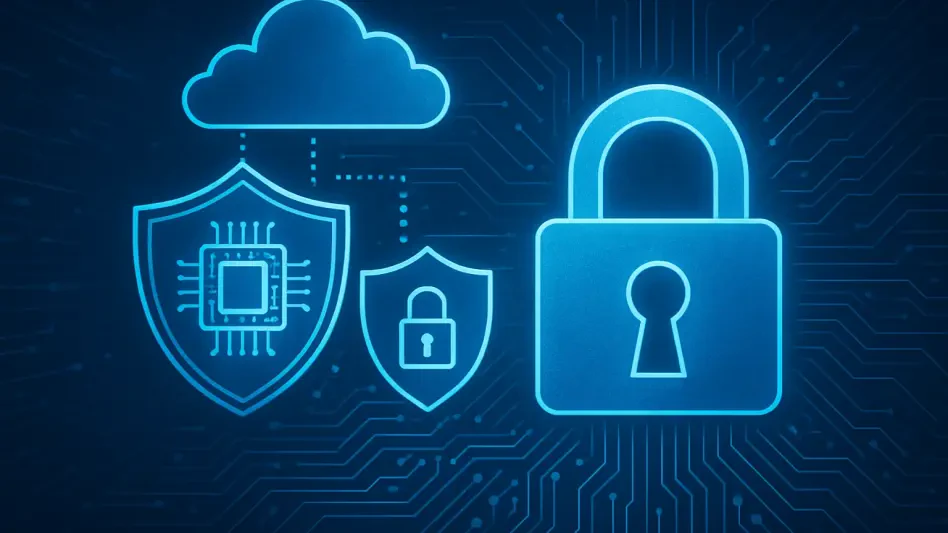In an era where physical security systems are becoming increasingly complex and data-driven, a transformative shift is underway that promises to redefine how safety and surveillance are managed. The rapid proliferation of high-resolution cameras and interconnected devices has placed unprecedented strain on traditional cloud-based architectures, exposing critical flaws in scalability and efficiency. Bandwidth constraints, persistent latency issues, and spiraling storage costs are no longer mere inconveniences but pressing challenges that demand innovative solutions. Edge computing emerges as a powerful answer, processing data directly at the source rather than relying on distant servers, thereby offering speed, cost savings, and enhanced responsiveness. This approach is not just a technological upgrade; it represents a fundamental rethinking of security infrastructure to meet the demands of a hyper-connected world. As organizations grapple with the need for real-time insights and streamlined operations, edge computing stands out as the cornerstone of a more resilient and adaptable future for physical security.
Challenges of Cloud-Based Security Systems
The cloud has long been heralded as a game-changer for physical security, enabling remote access to footage, seamless scalability, and simplified maintenance for sprawling networks of cameras and sensors. However, as the volume of data generated by these systems surges—driven by the adoption of 4K and higher-resolution video—the cloud’s limitations have become glaringly apparent. Bandwidth bottlenecks frequently stall the transmission of massive video files to centralized servers, disrupting the flow of critical information. This issue is particularly acute for organizations managing hundreds or thousands of devices, where network congestion can cripple operational efficiency. The inability to handle such data loads in a timely manner often results in missed opportunities to address security threats as they unfold, underscoring a significant drawback of over-reliance on cloud infrastructure in today’s high-stakes environments.
Beyond bandwidth woes, latency remains a persistent thorn in the side of cloud-dependent security setups. The time it takes for data to travel from a camera to a distant server and back again introduces delays that can be catastrophic in real-time scenarios like live threat detection or emergency response. Even a few seconds of lag can mean the difference between averting a crisis and facing dire consequences. Additionally, the financial burden of storing vast amounts of video data in the cloud continues to escalate, putting pressure on budgets, especially for large enterprises or public safety agencies. These combined challenges—slow data transfer, delayed processing, and rising costs—highlight an urgent need for a reimagined approach to security system design, one that can keep pace with the relentless growth of data demands while maintaining reliability and affordability.
Edge Computing as a Revolutionary Approach
Edge computing offers a compelling alternative to the cloud by shifting data processing to the point of origin, whether that’s directly on a camera or a nearby device. This localized approach significantly reduces the amount of data that must be sent over networks to centralized servers, alleviating bandwidth strain and ensuring smoother operation even in systems with thousands of endpoints. By handling tasks like video analysis or event detection at the source, edge computing minimizes network congestion and enables security systems to function efficiently under heavy loads. This is particularly beneficial for applications requiring constant monitoring, as it ensures that critical information isn’t bogged down by transmission delays, providing a robust foundation for modern security needs in diverse settings from urban centers to industrial complexes.
Another key advantage of edge computing lies in its ability to virtually eliminate latency, delivering real-time insights that are vital for effective security responses. When data is processed on-site, alerts about suspicious activities or potential threats can be generated and acted upon almost instantly, without waiting for round-trip communication with a remote server. This speed is a game-changer in high-pressure situations where immediate action is required to prevent harm or loss. Furthermore, by offloading routine processing tasks from the cloud, edge computing helps curtail storage expenses, as only essential data—such as flagged incidents or summary reports—needs to be archived long-term. This cost-effective balance of local and centralized resources positions edge computing as a practical solution for organizations seeking to optimize both performance and budget in their security operations.
Enhancing Edge Capabilities with AI and Containerization
The integration of artificial intelligence (AI) into edge computing devices marks a significant leap forward, transforming passive security tools into proactive, intelligent systems. Cameras and sensors equipped with AI can perform sophisticated analyses—such as identifying faces, recognizing license plates, or detecting unusual behaviors—directly at the edge, without needing to rely on cloud servers for computational power. This capability not only accelerates decision-making by providing instantaneous results but also reduces the strain on network resources, as raw data doesn’t need to be uploaded for processing. By reserving cloud infrastructure for secondary functions like long-term storage or aggregated analytics, AI-driven edge devices create a hybrid model that maximizes efficiency while ensuring that critical insights are available exactly when and where they are needed most, enhancing overall security effectiveness.
Complementing the power of AI is the advent of containerization, a technology that streamlines the deployment and management of applications at the edge. Platforms like Docker enable security teams to package software into lightweight, self-contained units that include all necessary components—code, libraries, and configurations—for seamless operation across a variety of hardware. This approach breaks down the barriers of proprietary systems that have historically limited flexibility in the security industry, allowing for rapid customization and updates without being tethered to specific vendors or devices. Much like downloading an app on a smartphone, containerization empowers organizations to add new functionalities—such as crowd density monitoring or fall detection algorithms—on demand, fostering an environment of innovation. This adaptability ensures that edge computing remains at the forefront of physical security, ready to evolve with emerging challenges and technological advancements.
Paving the Way for a Secure Tomorrow
Reflecting on the evolution of physical security, it becomes evident that the limitations of cloud-centric models have reached a tipping point, prompting a strategic pivot toward edge computing. The struggles with bandwidth constraints, latency delays, and escalating costs have long hindered the ability of traditional systems to meet the demands of an increasingly data-heavy landscape. Edge computing, with its ability to process information at the source, has proven itself as a vital solution, delivering the speed and efficiency needed to address real-time security challenges. The infusion of AI and containerization technologies further amplifies its impact, turning devices into smart, adaptable tools that reshape how threats are detected and managed.
Looking ahead, the path forward involves embracing a balanced architecture that leverages the strengths of both edge and cloud systems to create a cohesive, responsive security framework. Organizations should prioritize investments in edge-capable devices and explore containerized applications to ensure flexibility in deployment and scalability for future growth. Collaboration across the industry to standardize protocols and promote interoperability will also be crucial in sustaining this momentum. By adopting these strategies, the physical security sector can build on the foundation laid by edge computing, ensuring that systems remain agile and effective in safeguarding environments against ever-evolving risks.








